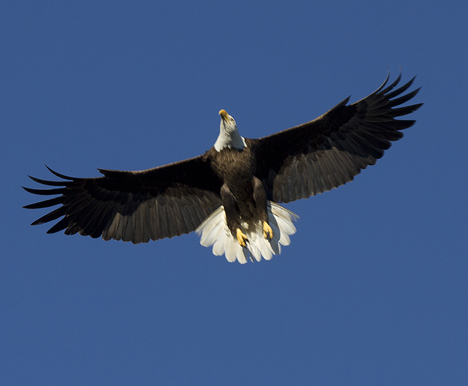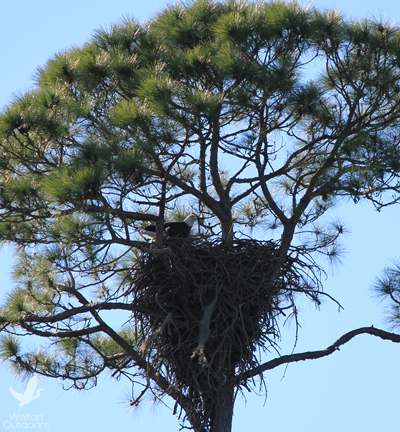
Florida’s eagle population now exceeds 4,000 birds each year
Bald eagles have been spotted in several locations in South Walton and along the Choctawhatchee Bay. It is great news that these splendid raptors are making Walton County their nesting home.
According to the last census taken in 2013 by Florida Fish and Wildlife Conservation Commission (FWC) there are six active nests around the Choctawhatchee Bay. Several of the nests are active, with returning eagle pairs every year. The bald eagle nesting season in Florida is defined as Oct. 1 through May 15.

What is remarkable is the recovery of the bald eagle population in Florida and the lower 48 states over the last four decades. Due to the unintended consequences of using the pesticide DDT from the 1940s through the early ‘70s, bald eagle numbers dropped precipitously. DDT caused eggshell thinning and the loss of reproduction.
The widespread use of DDT was banned in 1972 and following passage of the Endangered Species Act in 1973, Florida and other states began breeding season surveys to monitor the species “anticipated” recovery. The bald eagle was removed from the endangered species list in 2007, but the species remains protected under both state and federal law.

When Florida’s bald eagle population was first surveyed during the 1972-73 season, there were fewer than 200 nesting territories in only 20 counties. The 2011-12 surveys showed the nesting territories increased to 1,511 in 65 counties. Biologists say that Florida’s eagle population, which includes adults and offspring that will soon leave the nest, now exceeds 4,000 birds each year. Some of Florida’s population will migrate north this spring, going as far north as Nova Scotia, before returning next fall.
Florida’s number of nesting territories is the largest in the Southeastern United States.
Information courtesy Florida Fish and Wildlife Conservation Commission.
